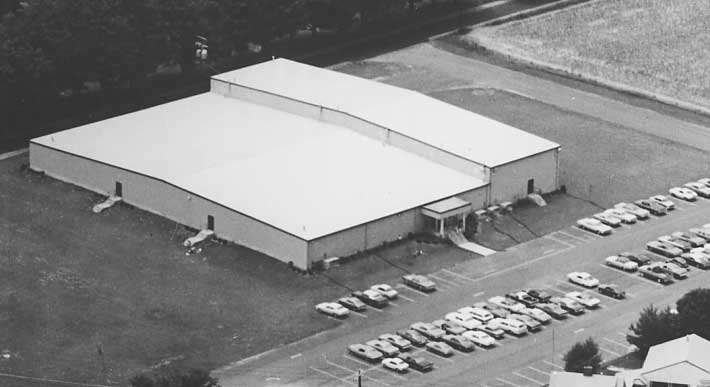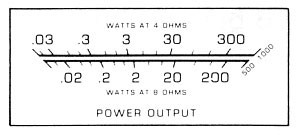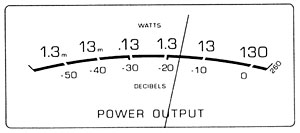McIntosh Laboratory Part 2
A History (1973 to
Present)
Copyright
1996-2005 by Roger Russell
All rights reserved
No portion of this site may be reproduced in whole or in part
without written permission of the author.
Includes the following subjects:
1973
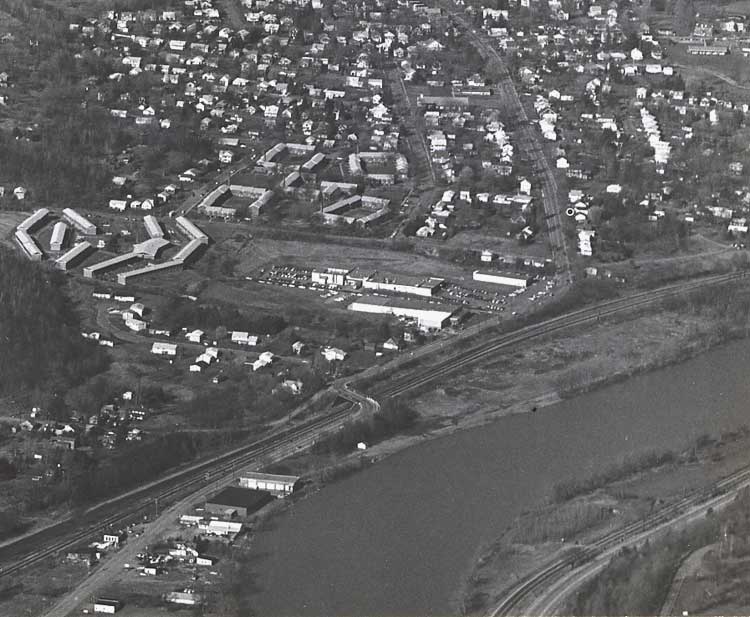
I took this photo about 1973 while flying down to visit Bill Hecht at United Speaker Systems. This was also on one of the chartered Navajo planes. McIntosh is in the center with the smaller bowling alley just to the right. The Susquehanna River is at the bottom right.
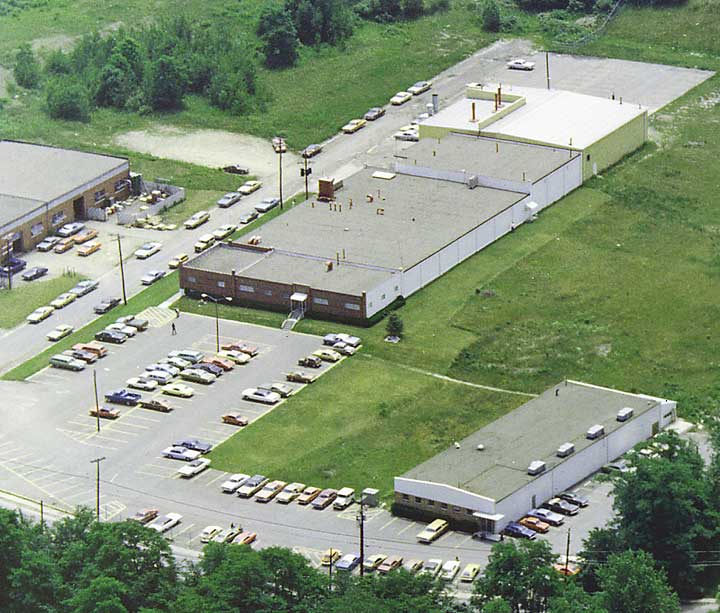
This was taken also about 1973. The center building was the main plant. Chambers Street is just to the left of it. Several additions had already been made to the rear portion of the building by this time. The yellow addition in the back was for the automatic paint machinery. In 1966, a small addition had been made to complete the left front corner of the building. This was for the loudspeaker lab, which consisted of a reverberant room and small listening room. Another addition was made after this date at the right rear of the main building. It was used for production and customer service.
In 1970, the building in the lower right was purchased. It was previously a privately owned bowling alley named Lucky Lanes and was not associated with McIntosh. Since then it was known as Plant 4. It was initially used for printed circuit assembly and customer service. In 1979 it was modified to become the home of the acoustics lab. The acoustics lab moved there in October of that year. The front third of plant 4 was a photography studio and classroom. In 1995, the building to the far left became available and was known as plant 2. It was previously owned by Dover Electronics. Later, Plant 6 that was located on Main street in Binghamton, was moved here. It was the home for engineering, customer service, purchasing, marketing, speaker production and car audio production. Later, the old Dover building had to be vacated and engineering was moved into plant 4 taking most of the space in the acoustics lab and the front portion, of the building as well. The photo studio was removed.
I was made Director of Acoustic Research. Larry Fish and I reported to Sidney Corderman, vice president in charge of engineering. The engineering section was moved from the main plant on Chambers Street to a larger existing facility on Ely Street in Binghamton. Finished products were stored and shipped from this new location.
By this time, many audio companies were investing in four channel quadraphonic sound. This included broadcasting, recording and home equipment. Although Gordon Gow was interested in the progress of this medium, he took no action to enter into this market. Gordon Gow, Morris Painchaud, Sidney Corderman and I visited Ben Bauer at CBS Labs in Stamford CT, the home of the SQ-matrix. We were given a demonstration of the SQ sound including the full logic circuitry. There was an option, of course, for licensing.
The SQ records could be played on a normal stereo system, but I thought I heard differences. After returning to McIntosh, I ran a spectrum test with the B&K real time analyzer for a CBS stereo record and then an SQ version of the same performance. The same passage was averaged for 10 seconds for each record and the results printed out on the B&K chart recorder. I found differences as much as 5 dB in the mid-range.
Compared to discreet quadraphonic tape recordings, the sound from SQ was lacking in separation and overall stereo effect. CD-4 and QS also had problems. Three different formats didn't help either. The technology just wasn't there to support this otherwise great idea.
I was personally very enthusiastic about four channels. However, I felt it should follow the tetrahedral placement that would give a vertical dimension to the sound as well. It was almost 25 years later that discreet 4 channel would appear again, this time with the right technology, having excellent response, separation, low distortion and low noise. However, it was used mainly for sound effects in home theater and was not a true 4-channel recording.
In the fall of 1973 construction started on an additional McIntosh building in Conklin.
 The MPI4 Maximum Performance Indicator was introduced
this year. It was solid state except for the picture tube and replaced the
outdated MI3 that was all tubes. The MPI4 was much improved in versatility. It
was essentially a dual trace oscilloscope that could show both audio channels
at the same time or individually. In addition, it displayed multipath and power
level with a peak hold feature. Mike Paiva was the designer and is shown in the
picture with his prototype.
The MPI4 Maximum Performance Indicator was introduced
this year. It was solid state except for the picture tube and replaced the
outdated MI3 that was all tubes. The MPI4 was much improved in versatility. It
was essentially a dual trace oscilloscope that could show both audio channels
at the same time or individually. In addition, it displayed multipath and power
level with a peak hold feature. Mike Paiva was the designer and is shown in the
picture with his prototype.
Mike also worked on the MR79 tuner shown further down on this page.
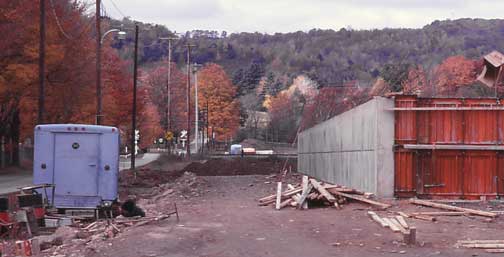
Work started on the new McIntosh building in the fall of 1973. It was located a few miles east of the main plant on Shaw road, just off Conklin Road (route 7). Shaw Road is at the left in the picture. The top of the concrete will be floor level for the building and was about 6 feet above ground level. This would be high enough to easily clear the estimated 1000 year flood level for the Susquehanna River that was just across Conklin Road.
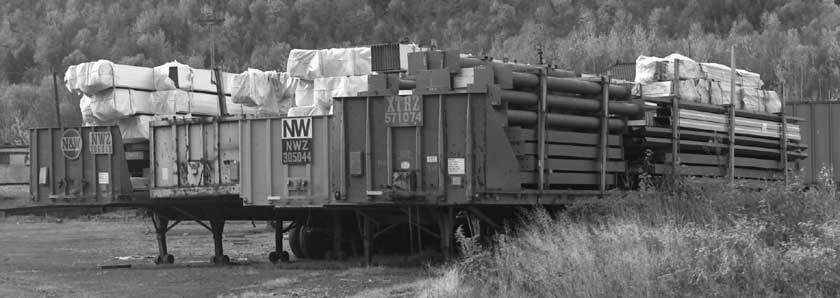
Here are some of the parts for the building along a railroad siding a few miles away, waiting to be delivered to the building site. How did I know this--because there were shipping labels on the trailers for delivery from McIntosh to the construction location.
![]()
1974
The new building in Conklin was completed in the spring and was called Plant 7. The Susquehanna River was just to the left of the picture and Shaw Road was on the far side of the building. The upper left portion of the picture has been blackened out by the photographer, perhaps because there was a cemetery across the street.
|
|
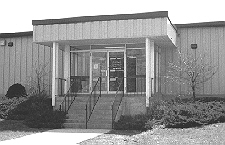 The steel siding was bright yellow. The taller portion
was used to store finished goods. The loading docks were in the rear.
The steel siding was bright yellow. The taller portion
was used to store finished goods. The loading docks were in the rear.
Speaker production was the first to move in. All final assembly and testing for all electronics units was done here. This includes the wave-soldering machine that was used for soldering printed circuit boards. Finished products were transferred to plant 6 on Ely Street for storage and shipment.
Unfortunately, plant 7 had to be sold in 1984. Sales had decreased drastically and the money was needed to invest in the first McIntosh CD player, the MCD7000.
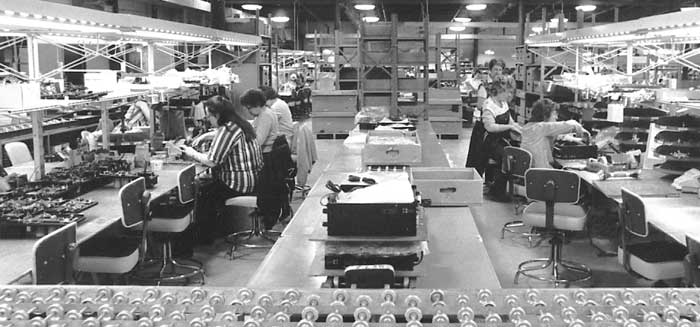
Here is one of the many production lines in plant 7. Roller tracks were used throughout. Practically everything McIntosh made was heavy. Units were placed on boards covered with carpet underlayment and rolled from one area to another.
The Company Truck
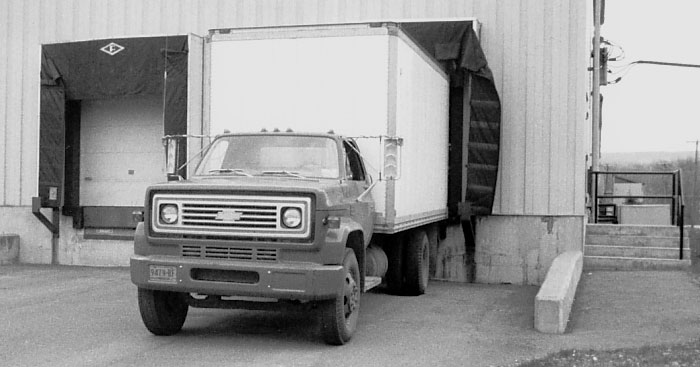
Perhaps forgotten by some was the company truck shown at the loading dock at plant 7. This was the lifeline between the various plants carrying parts, mail and other items from the warehouse and other plants. It was our link to the rest of McIntosh when Carl and I were way out at Plant 5 in Hillcrest. The truck was mostly driven by Skip Canfield, a very cheerful person. It was this truck that traveled to East Orange, NJ to pick up the ML-1C speakers made by United Speaker Systems. There was no lettering on the truck, perhaps for obvious reasons.
1975

Here is Ken Chester (left) and Mike Paiva in their two-man office. Ken left McIntosh a few years later to work at Digital Equipment Corporation (DEC). While at DEC, Ken helped Carl streamline the computer program he had developed for design of the crossover network to be used in the XRT18 speaker system. Later, Ken ran the program over the weekend on the big DEC computer that was far better than anything we had at McIntosh. Even then, it took 91 hours to arrive at a solution. In those days of limited computer abilities, this was a big deal
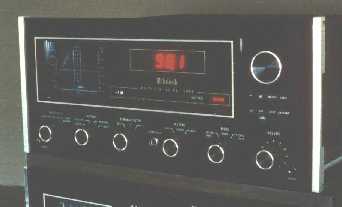 About this time a new tuner was being developed by
Mike Paiva. It was called the MR79 but it never went into production. This was
sort of a combination of a simplified MPI4 Maximum Performance Indicator and
the MR78 tuner. The tuning dial was replaced with a digital readout, although
it still retained a tuning knob. There were no preset frequencies.
About this time a new tuner was being developed by
Mike Paiva. It was called the MR79 but it never went into production. This was
sort of a combination of a simplified MPI4 Maximum Performance Indicator and
the MR78 tuner. The tuning dial was replaced with a digital readout, although
it still retained a tuning knob. There were no preset frequencies.
An added feature was the spectrum display on a scope screen. This was much like the display used in a device for ham radios called a Panadapter made by Panoramic in Mt. Vernon, NY, where Julian Hirsch used to work. The tuned station could be seen as a narrow vertical trace. In addition, stations 1 MHz to either side of this frequency were also displayed. The amplitude of each station indicated the relative signal strength. As the tuning knob was turned, the vertical traces would move left or right across the screen in accordance with the frequency tuned.
The tuner never went into production. One of the factors was the high bill of materials cost. There was also a lower sales forecast compared to when design began on the tuner.
The scope screen was on the left side and had
a bezel similar to the MPI4. The front panel arrangement from left to right was
as follows: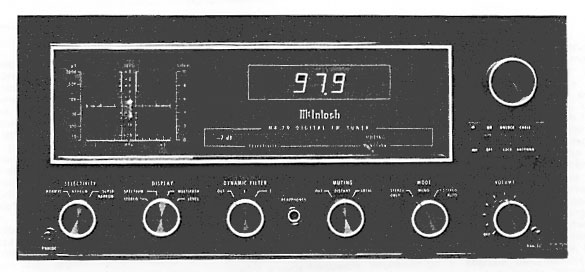
Selectivity: Normal, Narrow and Super Narrow
Display: Stereo, Spectrum, Multipath, and level
Dynamic Filter: Out, 1, 2
Headphones
Muting: Out, Distant and local
Mode: Stereo Only, Mono and Stereo Auto
The rest of the panel had lamps indicating selectivity and function as well as the digital frequency display. Under the tuning knob were more indicators for Unlock Cable and Lock Antenna. A pin diode was used to switch between antenna and cable inputs.
![]()
The MC-2205 power amplifier was manufactured. It was the first amplifier to incorporate the new Power Guard circuit and the new meters.
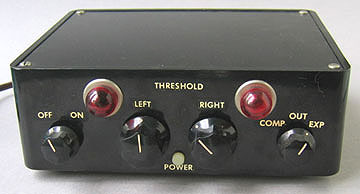 Power Guard was a circuit patented by Sidney Corderman
and Ron Evans. Patent number 4,048,573 was awarded on September 13, 1977 and
titled Amplifier Improvements For Limiting Clipping. It prevented the
amplifier from generating distortion or "clipping".
Power Guard was a circuit patented by Sidney Corderman
and Ron Evans. Patent number 4,048,573 was awarded on September 13, 1977 and
titled Amplifier Improvements For Limiting Clipping. It prevented the
amplifier from generating distortion or "clipping".
This was the basic principle of my first magazine article published in Popular Electronics October 1964 and titled Build a Hi-Fi Volume Expander-Compressor. A picture is shown at the left. Because Sidney and Ron were aware of my article, it was undoubtedly the connection that led to Power Guard. The only reference cited in the patent was for one other related patent. No magazine articles were mentioned.
I described an incandescent lamp at the output of the amplifier that was optically coupled to a photocell that was in turn connected in a voltage divider circuit at the input to the amplifier. In the compress mode, power from the amplifier could get too high and the music too loud. However, the lamp would then begin to light, reducing the photocell resistance in the shunt circuit, which then reduced the input to the amplifier, preventing the power amplifier from delivering higher power and keeping the same listening level. In the expand mode, the photocell was in the other part of the voltage divider. If all the music seemed to be close to the same level, the lamp threshold could be adjusted so the lamp began to light on louder passages. The photocell then reduced the series resistance to the amplifier and made the music louder. I made my own modules using a standard panel lamp, Lafayette photo cell and a cardboard tube. A power transistor circuit prevented excessive voltage from being delivered to the lamp. The red lamps on the front were in parallel with the lamps in the photocell module so the action could be monitored. See my page about the history of this compressor-expander.
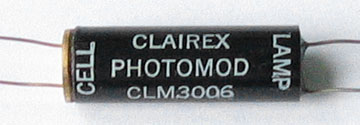 The first McIntosh prototype, shown at the right, was
called a P438 Power Output Limiter. By this time, LEDs became available and
could be used in place of larger modules with an incandescent lamp such as that
made by Clairex. The LED/photocell module was much smaller and the LED worked
much faster. However, the principle was the same when my design was used in the
compress mode.
The first McIntosh prototype, shown at the right, was
called a P438 Power Output Limiter. By this time, LEDs became available and
could be used in place of larger modules with an incandescent lamp such as that
made by Clairex. The LED/photocell module was much smaller and the LED worked
much faster. However, the principle was the same when my design was used in the
compress mode.
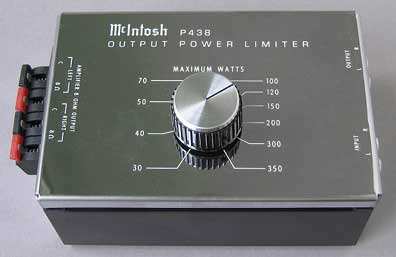 The control on the box could be adjusted between 30
watts and 350 watts and could be set to match the power of the amplifier being
used. The numbers corresponded to the power level for an 8-ohm speaker. It was
constructed in a small metal box. The preamplifier output was connected to the
input on the right side. The limiter output, also on the right side, went to
the power amplifier input. The output of the power amplifier connected to the
speakers and also to the push connectors on the left.
The control on the box could be adjusted between 30
watts and 350 watts and could be set to match the power of the amplifier being
used. The numbers corresponded to the power level for an 8-ohm speaker. It was
constructed in a small metal box. The preamplifier output was connected to the
input on the right side. The limiter output, also on the right side, went to
the power amplifier input. The output of the power amplifier connected to the
speakers and also to the push connectors on the left.
The operation of the McIntosh limiter was described in the instructions as follows: "The speaker signal was rectified and applied to a DC amplifier that drives a light emitting diode. The diode was in a small case with a photoresistor. This was also called a light dependent resistor (LDR). The LDR was part of a voltage divider that controlled the amplitude of the input signal. The LDRs were located under the metal clamps on the right side of the circuit board. These were used as an electrical shield and were connected to the negative speaker input."
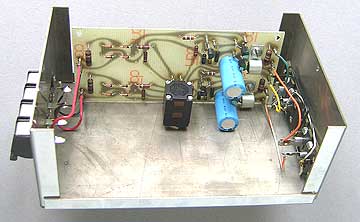 This was the basis of the Power Guard circuit used in
the first Power Guard equipped amplifier, the MC2205. However, later versions
became much more sophisticated and sensed not only voltage but also current
which was a measure of the power actually delivered to the speaker. Power guard
is now described as a waveform comparison circuit that continuously monitors
the output signal and compares it with the input signal. If distortion occurs
at the output, the Power Guard circuit reduces the input signal level until the
distortion is reduced below clipping. The amplifier gain is then restored.
This was the basis of the Power Guard circuit used in
the first Power Guard equipped amplifier, the MC2205. However, later versions
became much more sophisticated and sensed not only voltage but also current
which was a measure of the power actually delivered to the speaker. Power guard
is now described as a waveform comparison circuit that continuously monitors
the output signal and compares it with the input signal. If distortion occurs
at the output, the Power Guard circuit reduces the input signal level until the
distortion is reduced below clipping. The amplifier gain is then restored.
The whole process of the Power Guard circuits takes only a fraction of a second. Although this action is not audible, the resulting sound at maximum power levels always stays "clean".
Not only was this a very important improvement for the amplifier, but also for loudspeakers. Many amplifiers, including McIntosh, could be inadvertently driven into clipping. Not only was the resulting sound harsh and distorted but also the energy generated from the harmonic distortion products was sometimes enough to burn out the mid-range and/or tweeters in some speaker systems. All new amplifier designs continued to feature Power Guard.
Expansion and compression were added.
Another outgrowth of my concept of an expander/compressor was the introduction of an expander in the C32 preamplifier in 1977. Expansion was provided for the same reasons as my article--to correct for the compression that is imposed on most of the program material available at that time such as records, tapes and FM. The circuitry was much better than my inexpensive device. It not only had level match but also a speed control. Linearity was also much improved.
Use of the expander continued in the C33 preamplifier but a compress circuit was added as well, recognizing the benefit of having the capability to either expand or compress as more desirable. It was also done for the same reason as in my article—to compress music for background listening. The C33 controls could also be switched between the record or the listen lines for use with a tape recorder. The same functions were continued in the C34V preamplifier up to 1992
The expand/compress functions were discontinued after the C34V. There are two reasons I can think of. One is that CDs generally contained much greater dynamic range than earlier music material. Secondly, operation of the controls was somewhat complicated and as a result may not have been used that much. Consequently, the cost of later preamps could be reduced, offering a better value to the customer.
![]()
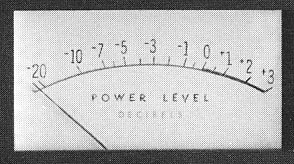 Meter circuitry in the first McIntosh amplifiers was
linear. That is, the meter reading was proportional to the audio signal voltage
and not a compressed signal corresponding to decibels (dB). However, the meter
scale was not made to read voltage in equally spaced divisions. It was made to
read the power level in dB, which is not linear and does not have equally
spaced divisions. The scales were very much like those used in VU meters and in
the Hewlett-Packard voltmeters we used in the lab. The first amplifier to use
meters was the MC2505 and is shown at the left. The amplifier went into production
in 1967.
Meter circuitry in the first McIntosh amplifiers was
linear. That is, the meter reading was proportional to the audio signal voltage
and not a compressed signal corresponding to decibels (dB). However, the meter
scale was not made to read voltage in equally spaced divisions. It was made to
read the power level in dB, which is not linear and does not have equally
spaced divisions. The scales were very much like those used in VU meters and in
the Hewlett-Packard voltmeters we used in the lab. The first amplifier to use
meters was the MC2505 and is shown at the left. The amplifier went into production
in 1967.
In addition, because the power range of audio is so much wider than what the meter circuitry would handle, a meter sensitivity switch was used to accommodate the different power levels. Switch positions were 0, -10 and -20. Only an engineer would be able to interpret what these three positions meant. Zero dB corresponded to rated power output of 50 watts. At the -10 position, zero dB was 5 watts and at the -20 position zero dB was 0.5 watts. However, if the meter was at the more sensitive positions of -10 or-20 and a loud passage occurred in the music, the meter needle would be pinned to the right.
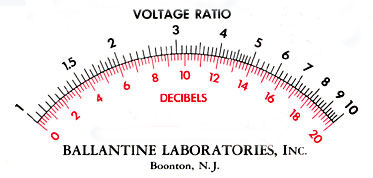
From my previous work at the Sonotone Corporation, a well-known manufacturer of hearing aids, most of our measurements were made in decibels and not in volts because it relates better with how we hear. Accurate meters that we used were made by Ballantine Laboratories, Inc., Boonton, NJ. The dB scale is linear but corresponding voltage ratios could also be read.
For your reference, twice the voltage corresponds to an increase of 6dB. However, a 3dB increase is the same as twice the power and is also the same as a 3dB increase in listening level. A 10dB increase is 10 times the power and is also the same as a 10 dB increase in listening level. It would seem more logical to have the meters read equal spacing for each 10 dB because we hear in terms of dB and not voltage. The scale could then be read directly in watts over a wider range.
When I was using the MC2300 in the listening room, which had meters like the MC2505, it was really not possible to take an accurate power level reading from the meters and then convert dB to actual power. I suggested to my boss, Sidney Corderman, that the meters should be changed to read with a linear dB scale in watts. Then the meter would cover a wider power range without the need for a switch and relate better to what we hear. He mentioned that it would be more difficult to make a logarithmic circuit to drive the meters but it was accomplished. The spacing was not exactly equal but was close enough. No switching was needed to cover a range of over 50 dB. For the MC2500 meter shown at the left, this was equivalent to a power range of .005 watts to 500 watts or a voltage equivalent of 1 to 100,000.
However, a meter sensitivity switch was still used. This was very confusing for the user because the three positions only applied to the dB scale and not for the watts scale. At the zero switch position, 0 dB equals 500 watts. At the -10 position, 0 dB equals 50 watts and at the -20 position, 0 dB equals 5 watts. I felt this was completely unnecessary and did not contribute to anything that a customer would understand or use.
A new feature that I did consider necessary was a peak hold function. Instead of trying to eyeball the meter needle for the short peak power the amplifier was delivering, a peak hold feature allowed a more accurate reading to be made. This was similar in performance to the hold feature in the Bruel and Kjaer sound level meter that I used in the speaker lab. The needle stayed at the maximum reading for a minute or so. The first amplifier to incorporate all of this meter circuitry was the MC2205 and it went into production in 1975.
|
|
|
|
|
After 1992, the meter sensitivity switch was not used in any of the power amplifiers.
|
|
|
|
|
The meter power scale and functions that I suggested are still in use today and I feel that it was a valuable contribution to the McIntosh amplifier products. |
|
![]()
Management decides to introduce a new line of electronics and speakers. It was named the Stereo Technology Division and has a Conklin, NY address. The Stereotech 1200 receiver was the first to be produced. Four different Stereotech speakers were designed and produced. Unfortunately, due to increasing material costs, the Stereotech line proved to be unprofitable and was discontinued in 1976.
1976
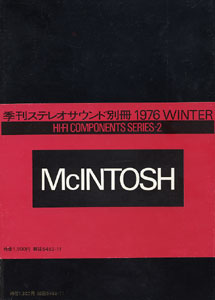 A special Japanese Stereo Sound book was published
exclusively about McIntosh. It contained 216 pages including beautiful black
& white and color pictures. There were also descriptions of all the
McIntosh equipment made up to 1976. It was titled Hi-Fi Components Series-2
MCINTOSH. The soft cover book was 7-1/4” by 10”. Unfortunately for us the text
was all in Japanese and I have not been able to find a translation anywhere
A special Japanese Stereo Sound book was published
exclusively about McIntosh. It contained 216 pages including beautiful black
& white and color pictures. There were also descriptions of all the
McIntosh equipment made up to 1976. It was titled Hi-Fi Components Series-2
MCINTOSH. The soft cover book was 7-1/4” by 10”. Unfortunately for us the text
was all in Japanese and I have not been able to find a translation anywhere
The book also contained pictures and text of Japanese enthusiasts and their collection of equipment in their homes. There were also pictures of the McIntosh production lines.
1977
In October, Gordon Gow became president
and CEO when Mr. McIntosh retired. Mr. McIntosh sold his stock shares to top
management and a few dedicated McIntosh investors. He was retained with a
salary on a consulting basis. He moved from his home in Endicott, NY to
Scottsdale, Arizona where he lived with his wife in the comfortable home that
he had built.
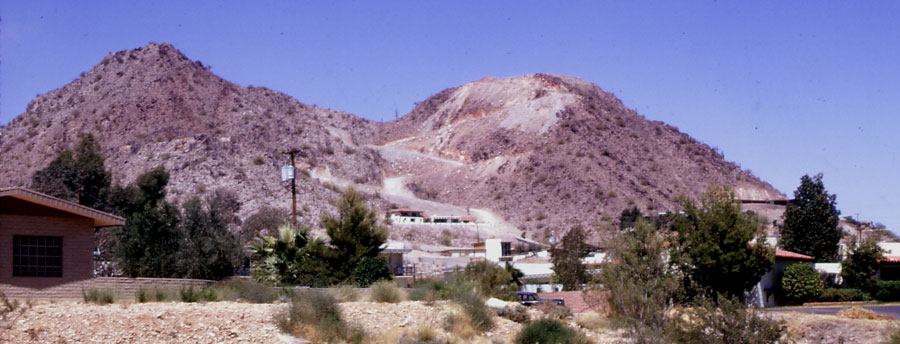
He had told me he had purchase a “mountain” in the Phoenix area and had his house built near the top. He later sold the rest of the “mountain” for what he had paid for it. Sidney and I had checked this out back in 1972 when this picture was taken.
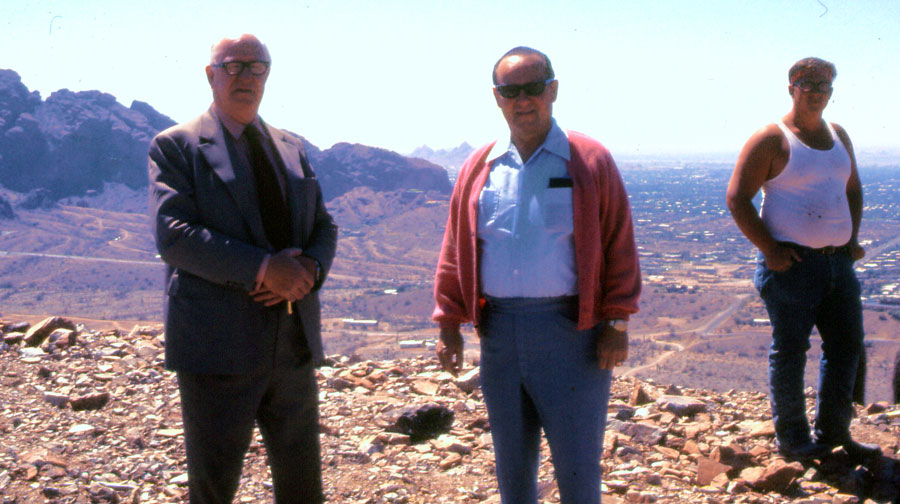
Mr. McIntosh and construction people at the house site.

This is the outstanding view from the living room area of the finished house.
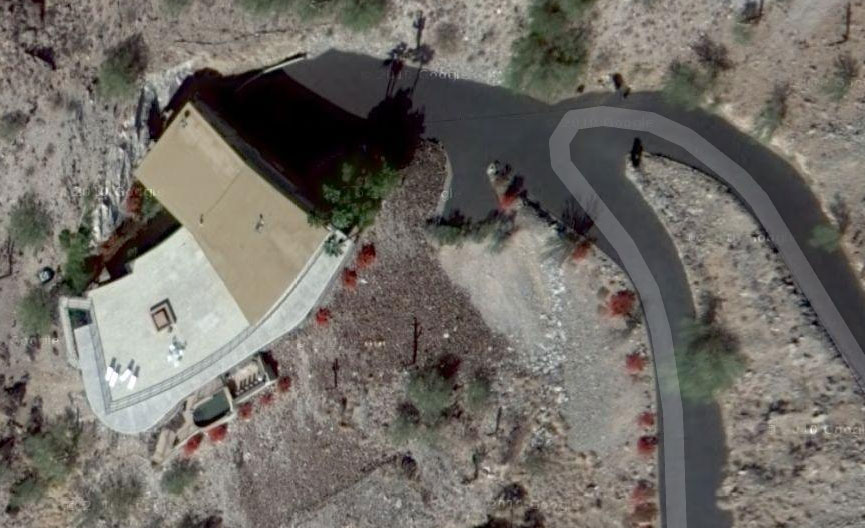
Here
is a satellite view of his house in 2010. His house had already been sold.
The road that ended at his house now continues uphill at the right to another
house.
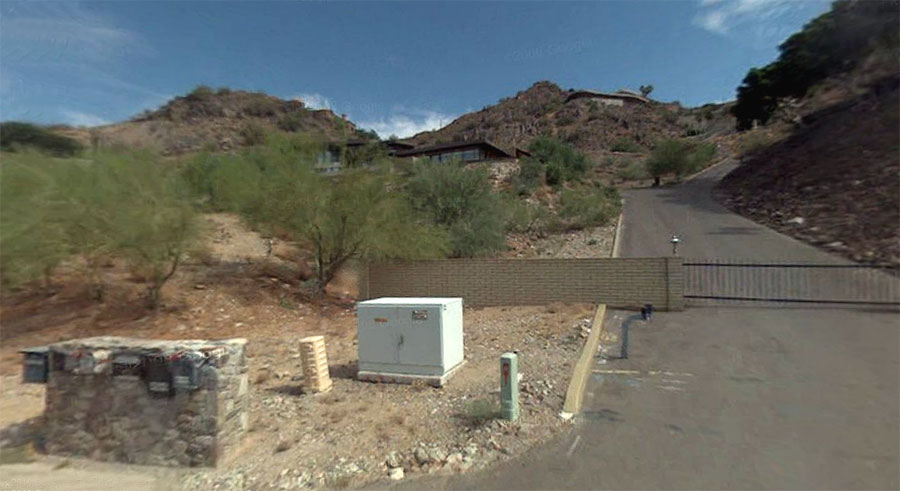
When I
had visited him many years ago, he had an alarm system that would notify him if
anyone drove on his private road.
Now a security gate protects several houses on the hill. It begins at E. Lamar
Road in Paradise Valley.
![]()
The New McIntosh Equalizer Controls
Sidney Corderman requested me to specify a set of revised tone control curves for the new C32 preamplifier. The old style curves that had been around for many years were not very effective for present day needs. In addition, the amount of boost and cut was excessive, allowing the power amplifier and/or the speakers to be easily overdriven when the tone controls were turned to maximum.
I decided to base the new "program controls" on a suggestion by the famous conductor Leopold Stokowski. Mr. Stokowski was a member of the Audio Engineering Society. In an AES paper presented many years ago, he suggested that the frequency range could be divided into five bands. Although the exact center frequencies were not specified, there was the lower bass, upper bass, lower mid-range, upper mid-range and highs. I had made many spectrum measurements from several different live sources. This included voice, several musical instruments in the lab and The Binghamton Symphony concerts. I also analyzed a wide variety of classical and rock recordings. I used all Bruel & Kjaer equipment that read averages or peaks using octave and 1/3 octave filters. At the Binghamton Symphony concerts I used a Bruel & Kjaer sound level meter and octave band filters. I had to put black tape over the flashing "power on" indicator so it wouldn’t disturb people sitting next to me.

Using this information and my listening experience, I arrived at the center frequencies of 30, 150, 500, 1500 and 10,000 Hz. The 10 kHz curve was different in that it covered a wide range from 1500Hz to 20kHz. High frequencies were often thought of as something that was only handled by a tweeter. However, in the terms of music, "highs" extended down much lower. The amount of boost and cut was reduced to about 12dB instead of 20 dB used in earlier equipment.
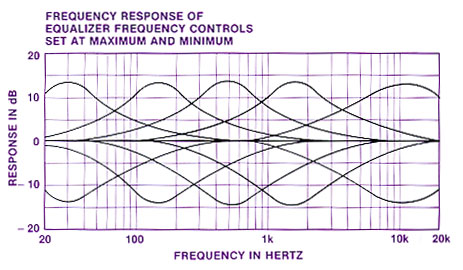
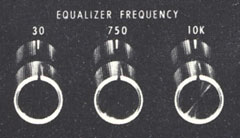 The new equalizer controls were very successful and
have been used starting in 1977. They were incorporated in the C30, C31V, C32,
C33, C34V, C35, C37 and C40 preamplifiers, MA6200 and MA6900 integrated
amplifiers, and MAC4100, MAC4200 and MAC4300 receivers. In the February 2002
issue of Stereophile magazine, page 24, Sam Tellig said "Old-fashioned
they might be, but the MA6900's traditional tone controls were welcome and
wonderful."
The new equalizer controls were very successful and
have been used starting in 1977. They were incorporated in the C30, C31V, C32,
C33, C34V, C35, C37 and C40 preamplifiers, MA6200 and MA6900 integrated
amplifiers, and MAC4100, MAC4200 and MAC4300 receivers. In the February 2002
issue of Stereophile magazine, page 24, Sam Tellig said "Old-fashioned
they might be, but the MA6900's traditional tone controls were welcome and
wonderful."
I also specified a set of simplified, and perhaps slightly compromised, three-band controls for other equipment. The center frequencies were 30, 750 and 10,000Hz. Boost and cut remained at 12dB. They were still very effective for lower cost products. This set of controls was used in the C504 preamplifier, MX117 tuner preamp plus the MAC4280 and MAC4275 receivers.
![]()
1978
McIntosh Sales in Japan
Ike Hattori and Okie Sugano were school mates. They both loved to make amplifiers, speaker systems, etc. since they were 13 or 14 years old. Ike started his career after graduating from Tokyo College of Science as an optical engineer designing cameras and exposure meters. Between 1958 and 1966 he was living in New York as a sales engineer for the Seconic Corporation.
After returning to Japan, Ike became and an importer of American Hi-Fi products such as Altec Lansing, Fairchild cartridges etc. His company name of Electori probably came from the words Electric and Hattori.
Okie started his career as an editor of a Japanese Hi-Fi magazine as well as a recording engineer and producer. They met again more than 10 years after having finished college. Ike had asked Okie to be an advisor for his company. Okie was already a consultant to Gordon Gow at McIntosh for exporting their products to Japan. He volunteered to do this on a purely friendship basis and refused any payment. Although Ike was very anxious to handle McIntosh, he did not want to compromise Okie’s relationship with Gordon. It took a long time to resolve this dilemma.
Gordon hired Jim Carroll, who used to work as a salesman for Harvey Radio in New York City. Gordon sent him to Japan to decide who would be the agent for handling McIntosh in Japan. After several visits, he decided to deal with the Yamagiwa Company that was originally a retailer. Okie advised Gordon that this was a delicate situation and explained the special cultures of the Japanese market and recommended to change to Ike’s company, Electori. However, Yamagiwa was a big customer of Electori so it was a very difficult situation. All this time, Okie was still doing consulting for Gordon..
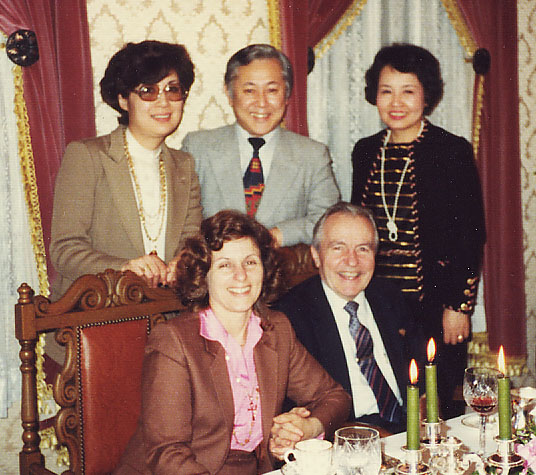 Okie was anxious for Gordon to visit Japan, telling him
of the French food and fine wine Every time Okie met with Gordon, he had to
nearly force him to visit. He explained that it could lead to expanding
McIntosh sales if he could better understand the Japanese market. Gordon Gow
visited Japan in 1978. Up to then, Jim Carroll was handling the McIntosh
exports. This is when Gordon finally met Ike Hattori in person
Okie was anxious for Gordon to visit Japan, telling him
of the French food and fine wine Every time Okie met with Gordon, he had to
nearly force him to visit. He explained that it could lead to expanding
McIntosh sales if he could better understand the Japanese market. Gordon Gow
visited Japan in 1978. Up to then, Jim Carroll was handling the McIntosh
exports. This is when Gordon finally met Ike Hattori in person
McIntosh products continued to be excellent sellers in Japan even after Ike Hattori passed away in 1993. Bavtech was an independent company in Los Angeles and was between McIntosh and Electori. Rumiko Ace, a very smart Japanese lady, and her husband, Bob Ace, handled liaison, exporting documentation, scheduling, etc.
Seated are Gordon Gow and his wife Palma. Standing left to right are Okie’s wife, Okie and Ike Hattori’s wife.
![]()
Gordon Gow searched for a unique high quality phonograph cartridge and tonearm that could be sold by McIntosh. Learn more about Okie Sugano, Bob Graham, cartridges and tonearms in this interesting story.
1979

Here is the rear of McIntosh buildings in 1979. The large yellow section at the left was the new addition to the main plant and the customer service entrance was in the center portion. The yellow building in the distance at the left was Plant 4, where the new anechoic chamber was being installed in the acoustics lab. The houses in the background are on the other side of the Susquehanna River. At the far right, up on the hill, is the state mental hospital. The gray portion is the old building that was built in 1858. The red brick buildings are all newer additions. When I first worked at McIntosh, one of the engineers mentioned that this was the retirement center for employees.
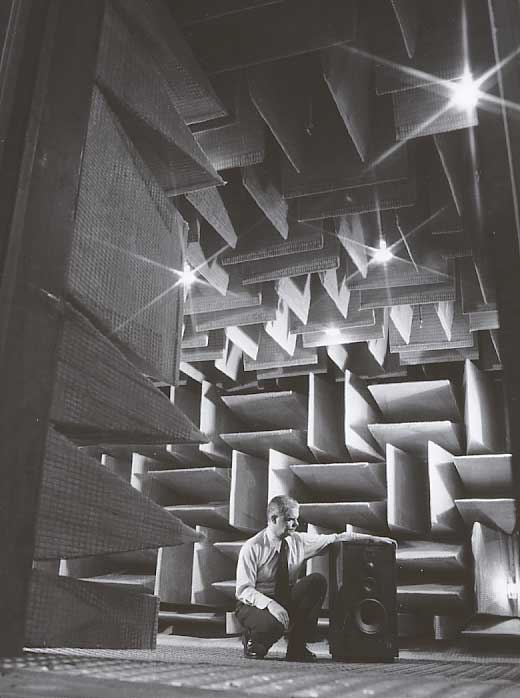
Each year an annual report was issued for the stockholders meeting. This included a synopsis of the year's activities and a financial statement certified by public accountants. They often had pictures of new McIntosh products. Many earlier reports, until 1976, contained a picture of Mr. McIntosh. This year, a full-page picture of our new anechoic chamber was in the report and I was in it. The caption under the picture says "The new anechoic chamber located in our new acoustical research facility." To my knowledge this was the only time any other person ever appeared in a picture in the annual report. Ed Aswad of Carriage House Photography took the picture and used a star filter to make a dramatic effect for the lights.
1983
As McIntosh continued to expand, the main building at 2 Chambers Street could no longer contain all the functions of the company. This was the warehouse at Ely Street in Binghamton. At this time engineering, warehouse and shipping were accomplished in this building. This was known as Plant 3 and was located a couple of miles to the northwest and across the Susquehanna River. Two floors were used for engineering. At the left, in the picture, are skids of parts and at the right and center are finished goods ready to be shipped. A propane driven fork lift was used to handle all the skids. Loading docks were further to the right.
Engineering consisted of a drafting section, model shop, library, offices and rooms for the engineers where the electronics were designed.
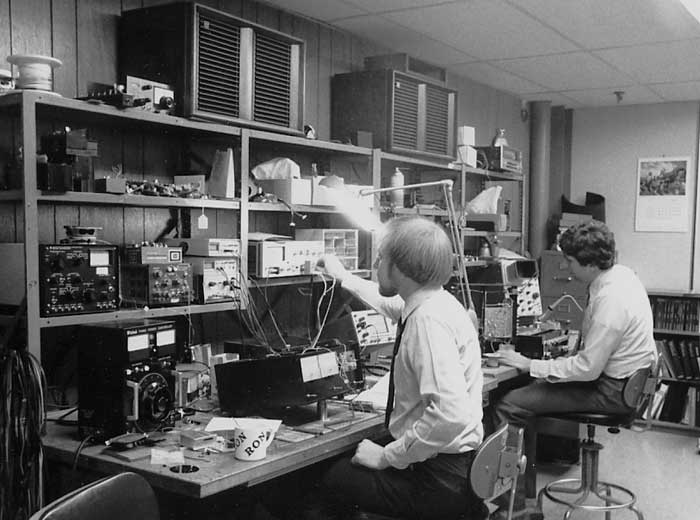
This was a typical setup for designing power amplifiers. In the picture are Ron Evans and Roger Stockholm. This was at the Ely Street facility. All the electronics were designed at this location. Engineers were grouped two to a room in the upstairs portion. Downstairs was drafting, library, model shop, the warehouse and shipping.
![]()
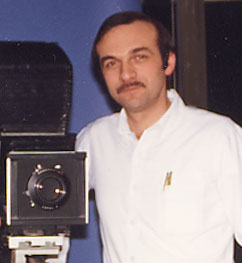 Tony Frontera was hired as the McIntosh photographer.
In addition to making photographs of McIntosh equipment for manuals and literature, Tony created a series of 21 outstanding color posters featuring various pieces of
McIntosh equipment. He won several awards. The posters were all 24" wide
and 36" high and were printed by Simpson Milligan Printing, which occupies
the floor below Plant 3. The posters were printed using a high quality four
color process. They were printed in small quantities of about 500 and were
available only to dealers. The posters were discontinued in the late 1980's. In
1992 Tony left McIntosh to become owner and manager of Tuthill's Photo Center,
Inc., a well-known photo store in Binghamton. The studio and darkroom equipment
was sold about 2001 when all of the McIntosh operations moved out of the rented
building across Chambers street and into plant 4. A few McIntosh posters were
made later by outside sources.
Tony Frontera was hired as the McIntosh photographer.
In addition to making photographs of McIntosh equipment for manuals and literature, Tony created a series of 21 outstanding color posters featuring various pieces of
McIntosh equipment. He won several awards. The posters were all 24" wide
and 36" high and were printed by Simpson Milligan Printing, which occupies
the floor below Plant 3. The posters were printed using a high quality four
color process. They were printed in small quantities of about 500 and were
available only to dealers. The posters were discontinued in the late 1980's. In
1992 Tony left McIntosh to become owner and manager of Tuthill's Photo Center,
Inc., a well-known photo store in Binghamton. The studio and darkroom equipment
was sold about 2001 when all of the McIntosh operations moved out of the rented
building across Chambers street and into plant 4. A few McIntosh posters were
made later by outside sources.

A complete photo studio was set up in the front part of plant 4. This included an 8X10 Sinar studio camera, special color temperature lights and various pull-down backdrops. It looked more like a big movie production rather than having all this equipment just to take a couple of pictures. It goes to show that the pictures we take for granted in the catalogs require a lot of effort and expense to make the equipment look nice. One of the more difficult parts was control of reflections in the glass panels and shiny chrome chassis.
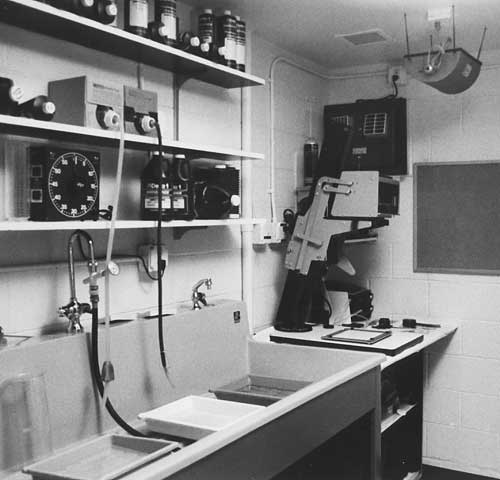
In addition, a complete darkroom was included. There was an Omega enlarger, sink with controlled temperature water, chemicals, timers and an automatic processing machine. The processor was essential. The temperature for developing color negatives and prints is far more critical than for black & white photography. The machine automatically maintained the correct temperature and a timer controlled all the automatic processing steps. This saved a tremendous amount of time and was worth the extra expense.
![]()
McIntosh entered into a license agreement with the Apple Computer Company. The agreement was for 10 years and allowed Apple Computer to use the Macintosh name in connection with computer production. There was a fee paid by Apple to McIntosh at the beginning of the agreement. Although the spelling was not the same, it sounded the same when it was spoken. The following statement appeared on the label on the back of the Macintosh Plus 1Mb computer.
|
Apple and the Apple logo are registered trademarks of Apple Computer, Inc. Macintosh is a trademark of McIntosh Laboratory, Inc. and is being used with express permission of its owner. |
![]()
Parts Department
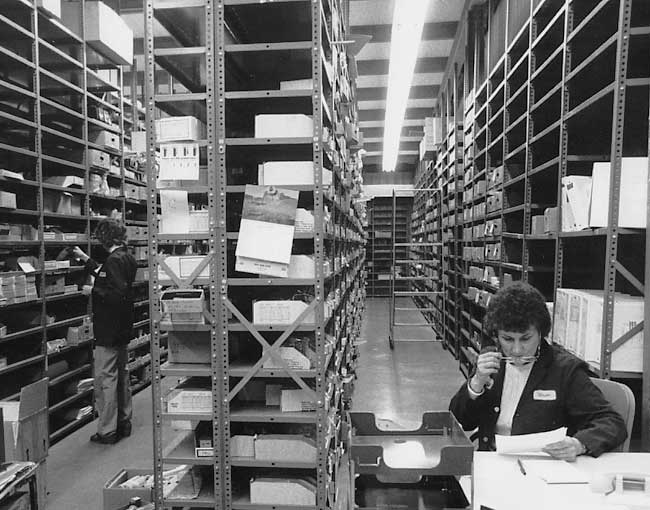
The parts department was located at the main Plant. There were rows and rows of shelves that contain all kinds of parts for older equipment. The McIntosh part numbering system made it easy to locate each part by category and number. Noreen was busy at her desk.
Customer Service
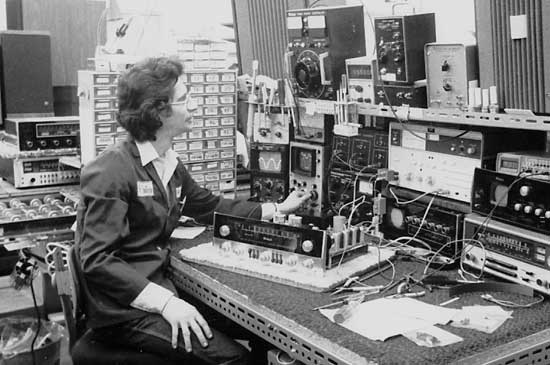
There were several work stations like this in customer service. This is Cliff Ramsey who was working there at that time. Service was available for all McIntosh units. Service moved from plant 4 in 1979 to make room for the acoustics lab. The entrance to service is now at the rear of the main building. For several years after the move, customers were still coming to plant 4 for service and I finally had to put a sign on the door directing them to the new location.
Panel Inspection
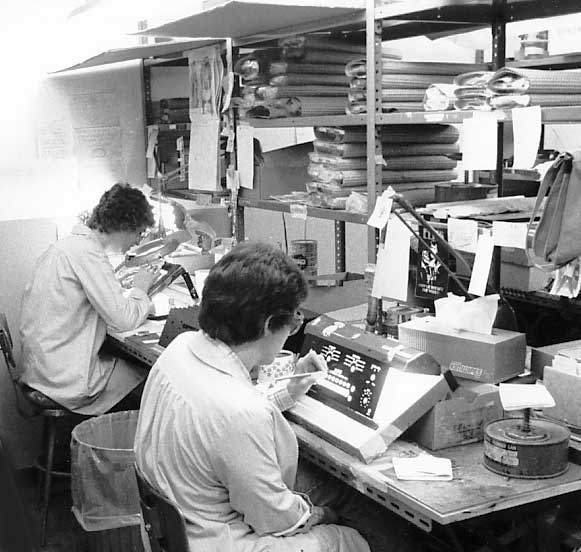
Several years before, the silk screening operation was moved from plant 2 on Bevier Street to the main plant. After cutting and silk screening, the glass panels were closely inspected and any defects are repaired.
Stock Room
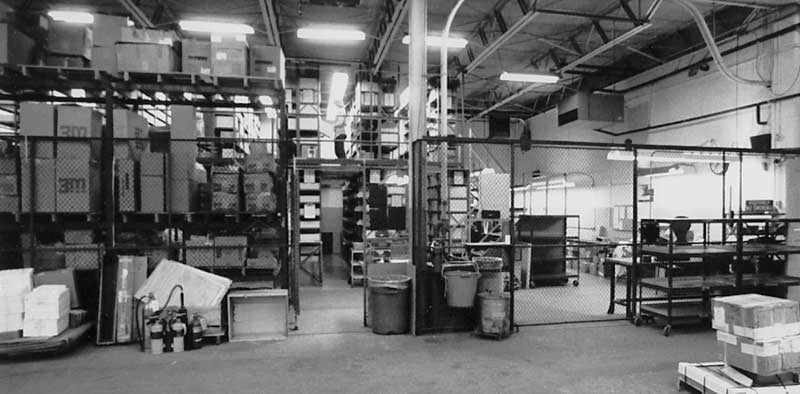
The stockroom was located near the rear of the main plant. It was on two levels with a grating type of floor on the second level. A spiral staircase was at the extreme left side and is not in the picture. Incoming parts were received and distributed as needed by production or sent to the parts department. The loading docks were opposite the stockroom.
Production Lines at the Main Plant
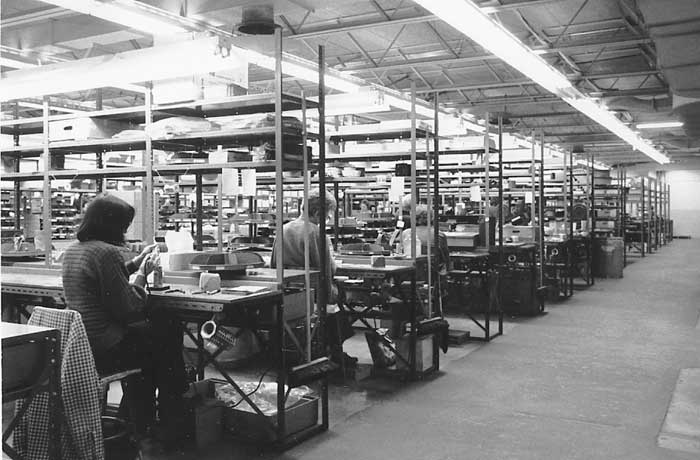
In 1983, several subassemblies were made at the main plant. This section was the entire production area, when McIntosh first moved to Chambers Street in 1957.
Machine Shop
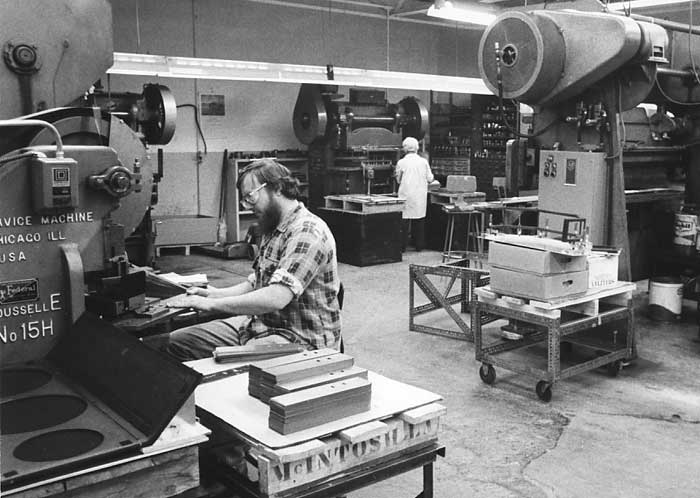
The machine shop was located at the main plant. This was where all the sheet metal was cut, punched and bent. The controls on these machines were set up so that each hand had to be on a power button located on either side before the machine would operate. A protective paper was kept on the chrome pieces to avoid scratches. I used the chrome-plated scraps for heat sinks under the power resistors on the crossover boards.
1984
McIntosh came out with two moving
coil phonograph cartridges, the MCC 800 and the MCC 1000. The MCP
1 moving coil preamplifier went into production at the same time. It was
designed and built by McIntosh. The MCP 1 case, included with it, was made of
selected solid rosewood. With the advancement of CD's, however, very few of the
cartridges and preamps were sold. They were discontinued in 1987.
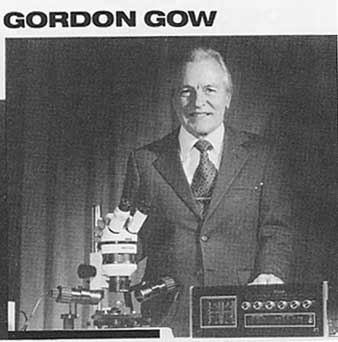 An article was published in the July 1984 issue of
High Fidelity magazine titled Audio Electronics: American Style by J.
Gordon Holt. One of the people featured was Gordon Gow. Gordon was pictured
with a Wild-Heerbrug microscope for examining phonograph styli and a McIntosh
MPI-4 Maximum Performance Indicator. The article read as follows:
An article was published in the July 1984 issue of
High Fidelity magazine titled Audio Electronics: American Style by J.
Gordon Holt. One of the people featured was Gordon Gow. Gordon was pictured
with a Wild-Heerbrug microscope for examining phonograph styli and a McIntosh
MPI-4 Maximum Performance Indicator. The article read as follows:
"McIntosh Laboratory. One of the
pioneers of audio electronics, McIntosh Laboratory got 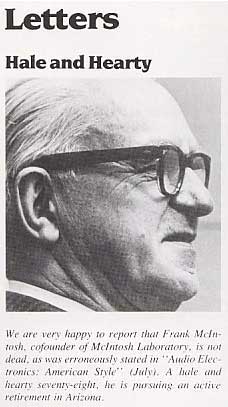 started with an idea. Cofounders Frank McIntosh and Gordon Gow came
into electronics from World War defense communications jobs and later operated
a consulting firm in Washington, D.C. Both were music lovers and record
collectors, and both were active in high fidelity before most people had even
heard of it. They observed that the major shortcomings of tube amplifiers were
traceable to inefficient coupling between the two halves of the push-pull
output transformer windings. Their solution was to interleave the windings,
placing the wires as close to one another as physically possible, yielding an
amplifier with lower distortion and phase shift. The original McIntosh Model
50W amplifier was so clearly superior to it's competition that it sold itself
on the basis of it's sonic merits alone, and McIntosh Laboratory was founded in
1947 to manufacture it.
started with an idea. Cofounders Frank McIntosh and Gordon Gow came
into electronics from World War defense communications jobs and later operated
a consulting firm in Washington, D.C. Both were music lovers and record
collectors, and both were active in high fidelity before most people had even
heard of it. They observed that the major shortcomings of tube amplifiers were
traceable to inefficient coupling between the two halves of the push-pull
output transformer windings. Their solution was to interleave the windings,
placing the wires as close to one another as physically possible, yielding an
amplifier with lower distortion and phase shift. The original McIntosh Model
50W amplifier was so clearly superior to it's competition that it sold itself
on the basis of it's sonic merits alone, and McIntosh Laboratory was founded in
1947 to manufacture it.
Frank McIntosh died in 1971, but the company's products still reflect his interest in collecting records, including old discs of variable sound quality. Although many of it's amps, preamps, and tuners are sold to hardware enthusiasts, the company is more concerned with meeting the needs of the serious music lover. Thus, while aiming for performance standards of the perfectionist consumer, McIntosh's preamplifiers also contain sophisticated signal-processing facilities—features that may be anathema to the audiophile purist but are obligatory to the collector of irreplaceable recordings." (anathema—a vigorous denunciation)
Later, in the September1984 issue of High Fidelity in Letters, a correction was made that Frank McIntosh was still alive and did not die in 1971! It amazes me that Holt was apparently unaware for thirteen years that Mr. McIntosh was alive and well.
1985
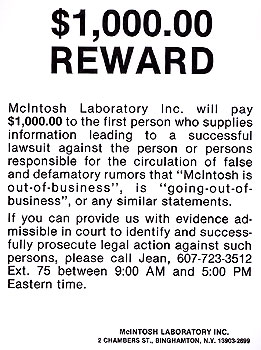 With the sale of plant 7 in 1984, and continued low
sales volume, it was inevitable that rumors could start that McIntosh was going
out of business and this was what happened. A letter and poster was issued to
dealers on March 20, 1985. The letter stated the following:
With the sale of plant 7 in 1984, and continued low
sales volume, it was inevitable that rumors could start that McIntosh was going
out of business and this was what happened. A letter and poster was issued to
dealers on March 20, 1985. The letter stated the following:
“Enough is enough!
It seems that there are, among the non-McIntosh supporters, those whose wishful thinking continually produces destructive rumors, rumors that sap the excitement and energy from all of us. Much to the chagrin of these depressing rumor mongers, McIntosh continues to not only exist but to show an aggressive viability. Until now McIntosh has, rather quietly, done battle with these rumors. But now we want to directly engage, in a court of law, those who are responsible. We, therefore, provide you with an assertive and forceful response. This reward offer puts in your hands, and in the hands of your sales people, the strong argument of “putting money where the mouth is”
1986
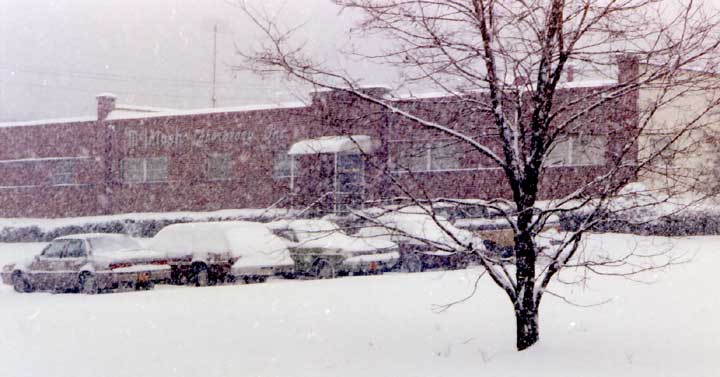
This is the view of the main plant when looking out of the door near the front of Plant 4. The buildings were separated by several hundred feet. It is not one of those days to motivate putting on boots, jacket and gloves just to go over to get the days mail.

When it got this bad, I didn’t go over at all. Sometimes the snow accumulation was so great that the lab was closed early. When we had a thunderstorm, I would just wait it out.
Group Employee Photos from 1986
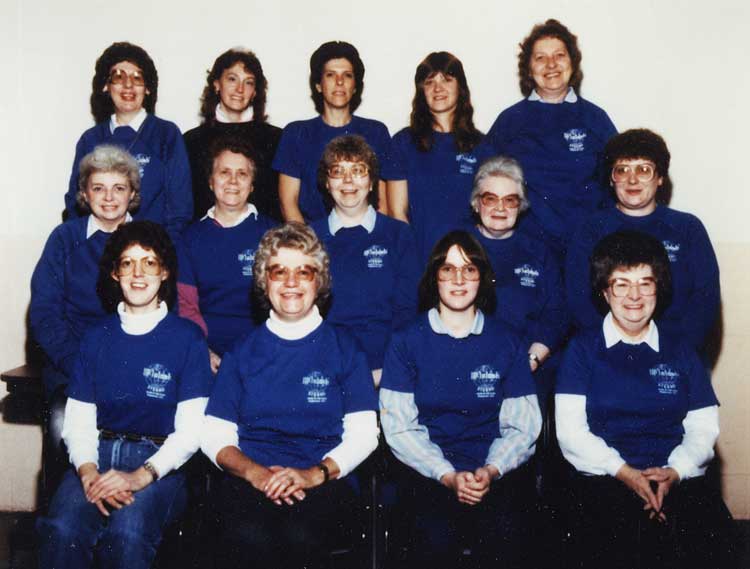
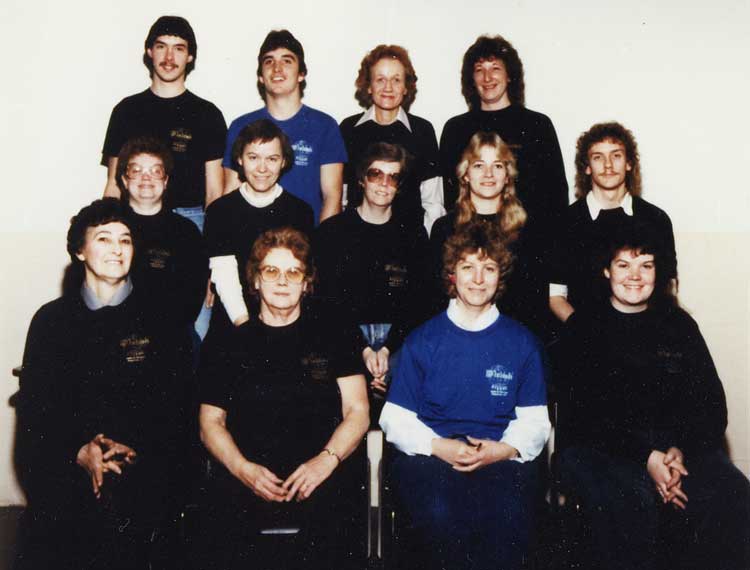
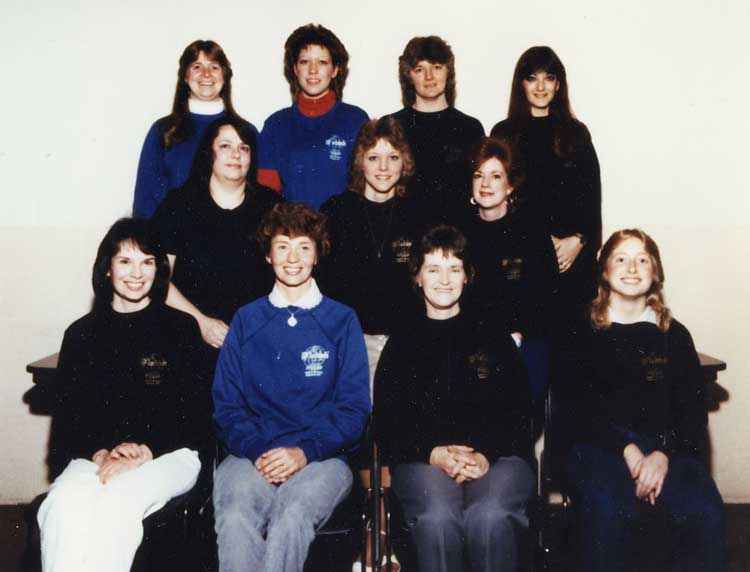
1989
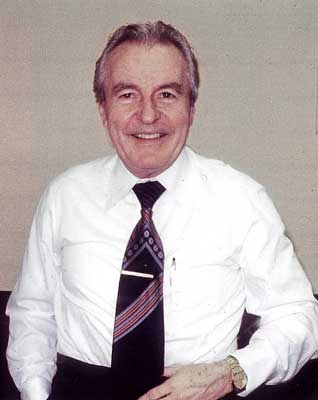 In June of 1989 Gordon Gow passed away peacefully in
his sleep on a Sunday afternoon. Maurice Painchaud, who was Vice President and
Treasurer, took on the additional duties as president.
In June of 1989 Gordon Gow passed away peacefully in
his sleep on a Sunday afternoon. Maurice Painchaud, who was Vice President and
Treasurer, took on the additional duties as president.
Everyone that knew Gordon Gow misses him. He was a knowledgeable, motivated, generous, fun-to-be-with person. He initiated McIntosh sponsored retailer sales and communication workshops. This included personnel selection, fiscal responsibility, retail management, accounting and other topics. His great desire to better understand the requirements of McIntosh retailers and consumers led to membership in the International Society for General Semantics (ISGS). With his dynamic personality and intense interest, He was soon elected to the board of directors and the office of vice president. He also initiated McIntosh sponsorship of a yearlong study at the University of Michigan to predict future behavior and lifestyles. The program proved to be of great value in the design and marketing of McIntosh products.
Gordon believed that investing in the very best test equipment was essential. It placed McIntosh in a position of knowledge and authority. In the lab as well as the clinics, more was often known about other company's products than they themselves knew. There was no skimping in the acoustics lab either. A large walk-in anechoic chamber and reverberant room for speaker design for most speaker companies was a matter of procrastination. For us it was a reality along with $100,000 worth of Bruel & Kjaer acoustic test equipment. The investment was also very useful for sales and impressed many visitors that toured the lab.
Gordon was devoted not only to his work but also to his family, learning and living well. He became well versed in many subjects including knowledge of wine and he even spoke some Italian. He had devoted friends in many countries. He was held in very high esteem in Japan and Italy. His reputation as an entertainer was worldwide. At a local Vestal restaurant, Gordon had a specially prepared roast beef menu called "The Gow Cut", and at a Binghamton restaurant had one called "Gow Clams."
Even today, I personally feel a very great loss as I shared many of his ideals and learned much from the examples that he set. I was a member of the International Society for General Semantics before I came to work for McIntosh and this formed an even stronger tie with him.
An article was published about his career in the October 1989 issue of Audio magazine.
1990
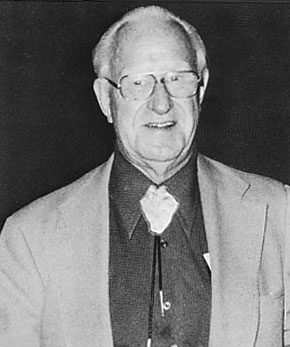 In January, Mr. McIntosh passed away at the age of 83.
He was known to most of us as Mr. Mac. He was born on July 12, 1906 in Omaha,
Nebraska. He was an accomplished cellist. As a high school student in the early
1920's, he performed with his brothers in the McIntosh String Trio over radio
station WOAW (now WOW) in Omaha. He recalls, "I was offered a music
scholarship, but I turned it down since I was more interested in
engineering." He eventually became chief engineer at WOAW. He also taught
math and radio at a YMCA school, wrote columns on radio for various newspapers,
and was radio editor for Popular Mechanics magazine.
In January, Mr. McIntosh passed away at the age of 83.
He was known to most of us as Mr. Mac. He was born on July 12, 1906 in Omaha,
Nebraska. He was an accomplished cellist. As a high school student in the early
1920's, he performed with his brothers in the McIntosh String Trio over radio
station WOAW (now WOW) in Omaha. He recalls, "I was offered a music
scholarship, but I turned it down since I was more interested in
engineering." He eventually became chief engineer at WOAW. He also taught
math and radio at a YMCA school, wrote columns on radio for various newspapers,
and was radio editor for Popular Mechanics magazine.
In 1929, he went to work for Bell Telephone Labs. During his 8 years there, he either installed or worked on the equipment for 235 radio stations. I remember him mentioning one particular station, WRVA, in Virginia. He joined the Radio and Radar Division of the War production Board in early 1942. In 1945 he started his own consulting business. While working for Frank Stanton, who was then president of CBS, he learned of the need for better quality audio amplifiers. He decided to build his own--one that would provide both higher power and lower distortion than ever before. As we now know, it became the "unity-coupled" circuit. He patented this in 1949 and set up is own manufacturing company, McIntosh laboratories, in Silver Spring, Maryland. The amplifier was the 50W-1, which delivered an unprecedented 50 watts from 20 to 20,000 Hz at less then 0.3% distortion
He first demonstrated it before a meeting of the IRE. A major skeptic was O. B. Hansen, then chief engineer for NBC. Hansen spent hours studying the amplifier and ended up ordering fifty of them. Another major order came from the Canadian Broadcasting Corporation and McIntosh Laboratories was off and running.
Although Mr. Mac had several other irons in the fire, such as phonograph records and museum tour audio equipment (Lectour), the most successful were the amplifiers. Later, of course this branched out into preamplifiers, tuners, receivers, speakers, etc.
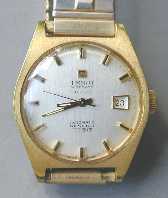 Mr. Mac was known by many friends and employees for
having a great sense of humor. I often remember him coming up with humorous
lines or questions. I remember one time when we were having lunch at the Vestal
Steak House, when he asked the waitress for the “dreaded veal cutlet.” She
never said anything—just wrote it down—probably with a “b.” He was also
concerned about the employees and would come out to visit with the production
people now and then. In his gruff voice he would wish everyone a Merry
Christmas, etc. over the PA system. There was never a need for a union at the
lab.
Mr. Mac was known by many friends and employees for
having a great sense of humor. I often remember him coming up with humorous
lines or questions. I remember one time when we were having lunch at the Vestal
Steak House, when he asked the waitress for the “dreaded veal cutlet.” She
never said anything—just wrote it down—probably with a “b.” He was also
concerned about the employees and would come out to visit with the production
people now and then. In his gruff voice he would wish everyone a Merry
Christmas, etc. over the PA system. There was never a need for a union at the
lab.
One year in the late 1960's, I remember he brought watches back from a European trip and gave one to each of the engineers. This is a self-winding Tissot Seastar PR516 that also tells the date. It still works today as well as it did back then.
For some reason I am not able to find an acknowledgement about his passing in any of the audio publications.
![]()
McIntosh Sold To Clarion
In August, McIntosh was purchased by Clarion of Japan for 28.6 million dollars. Clarion was a large and well-known manufacturer of car audio equipment. In Japan, McIntosh had the highest reputation for quality and excellence. Clarion expressed its firm commitment to continuing McIntosh philosophies, McIntosh policies, Mcintosh management and McIntosh marketing. McIntosh then had financial support to enter new areas such as home theater and car audio which it might not have acquired on its own. Over the following years expansion proved to be true.
 On August 27, Mr. Yutaka Oyamada, President of
Clarion, played host at a luncheon in the ballroom at the Sheraton Hotel for
over 250 employees of McIntosh Laboratory. Mr. Oyamada, Clarion President
(left) and Maurice Painchaud, McIntosh President are shown in the picture.
On August 27, Mr. Yutaka Oyamada, President of
Clarion, played host at a luncheon in the ballroom at the Sheraton Hotel for
over 250 employees of McIntosh Laboratory. Mr. Oyamada, Clarion President
(left) and Maurice Painchaud, McIntosh President are shown in the picture.
Mr. Oyamada gave a speech in English. "We at Clarion are very excited to work with you to build upon McIntosh's tradition of excellence. .... an important part of our future is McIntosh and you. I would like to emphasize that we merged with McIntosh because we like McIntosh as it is, and we have no intention of changing what has made it so successful...."
 Within the hour not only were anxieties put to rest,
but an enthusiasm and excitement for the future was generated. At the end of
the luncheon, each employee was given a gift of a beautiful man's or ladies
Seiko watch.
Within the hour not only were anxieties put to rest,
but an enthusiasm and excitement for the future was generated. At the end of
the luncheon, each employee was given a gift of a beautiful man's or ladies
Seiko watch.
I was required to sign a two-year contract with Clarion along with all other key personnel. This guaranteed to us that our jobs were secure and that Clarion would retain the original management people to continue operations. McIntosh expanded into the car audio and home theater areas since the Clarion purchase.
Soon after that, Carl Van Gelder and I were installing speakers in an Infiniti Q45, the first of many prototype auto installations. Meanwhile, engineering was working on the first 12-volt car amplifier.
![]()
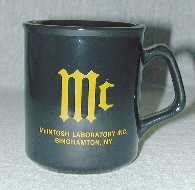 In 1990, I designed, financed and sold souvenir
McIntosh mugs. The first group was a designer mug with a yellow colored
lettering. I chose a yellow color instead of shiny gold because the gold
lettering was not microwave safe.
In 1990, I designed, financed and sold souvenir
McIntosh mugs. The first group was a designer mug with a yellow colored
lettering. I chose a yellow color instead of shiny gold because the gold
lettering was not microwave safe.
The wording on the front side was a large Mc logo that was used for the McIntosh loudspeakers. Under it, in smaller print, were the words "McIntosh Laboratory Inc., Binghamton, NY. On the other side were the words "...For the Love of Music..." that was used in much of the McIntosh advertising and posters at that time. Capacity was 11oz. They were sold to employees, McIntosh representatives and collectors. The mugs were very popular.
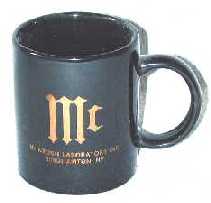
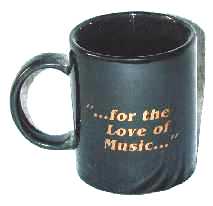 In
1991 I changed the lettering to a new 22kt gold ink that had been recently
developed. It was non-conductive and was therefore microwave safe. The real
22kt shiny gold made a tremendous improvement in the appearance despite the
increase in cost. See my gold reference page about
karat ratings.
In
1991 I changed the lettering to a new 22kt gold ink that had been recently
developed. It was non-conductive and was therefore microwave safe. The real
22kt shiny gold made a tremendous improvement in the appearance despite the
increase in cost. See my gold reference page about
karat ratings.
It was interesting to compare an early sample in standard gold leaf with the new non-conductive gold ink. I connected an ohmmeter across one of the letters and read a short circuit on the gold leaf version and an open circuit for the new version.
I also changed the appearance of the mugs as there was a quality problem from the supplier of the designer mugs.
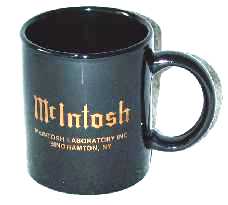
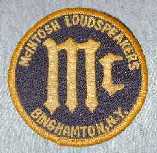 Later,
after asking a number of people if they would prefer the word McIntosh instead
of the Mc, I found most of them preferred McIntosh. All of the later ones were
made this way. The words "...For the Love of Music..." stayed the
same on the back of the mugs.
Later,
after asking a number of people if they would prefer the word McIntosh instead
of the Mc, I found most of them preferred McIntosh. All of the later ones were
made this way. The words "...For the Love of Music..." stayed the
same on the back of the mugs.
The year before, I designed and financed a jacket patch just for McIntosh Loudspeakers. This was available only to employees. I used to collect military patches when I was little and was probably what inspired the idea.
![]()
1991
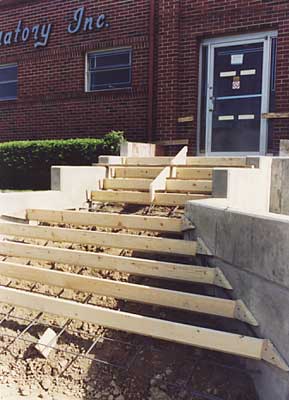 In September, Ron Fone became the new McIntosh
president. He signed a four year contract with Clarion. Fone had previously
been with Acoustic Research in Massachusetts. He had been referred to as
"The Silver Fox" by Audio Times. Maurice Painchaud stayed on until
May 1992 and then retired.
In September, Ron Fone became the new McIntosh
president. He signed a four year contract with Clarion. Fone had previously
been with Acoustic Research in Massachusetts. He had been referred to as
"The Silver Fox" by Audio Times. Maurice Painchaud stayed on until
May 1992 and then retired.
In June of 1991, the main plant received a new face lift. The old steps had been sinking and did not create a good impression. Rumor had it that the new steps and roof cost $50,000. Rumor also had it that the new angled roof over the entrance was covered with genuine gold leaf.
![]()
Gordon J. Gow Technologies, Inc.
In April of 1991, Joe Perfito and his sister, Palma Gow (wife of the late Gordon J. Gow), created a company of their own called Gordon J. Gow Technologies, Inc.. The company was based in Orlando, FL.
Palma Gow was the owner of the Stereo Shops, a hi-fi store in Newton Center, MA near Boston. It opened in 1974. When she married Gordon Gow in 1977 and moved to Binghamton, she sold the Stereo Shops store to Jeff Boccaccio.
Joe Perfito was president of Gordon J. Gow Technologies. He was the McIntosh Southeast Regional representative from 1975 to 1982 and the National representative from 1982 to 1990. Joe brought many dealers and their employees on the tour through the lab over the years. Joe gained much experience in those 15 years with McIntosh and Gordon Gow.
The new company initially started by selling a variety of audio and speaker cables under the name of Tributaries and Tribute. The first shipments began in January of 1992. Soon after, Jeff Boccaccio, a former and very successful McIntosh dealer, joined Joe. He designed a digital counter and wire-measuring dispenser. He also designed the Tribute S-Video Cable Compensator and Tribute C2S Converter. These have been very popular and have been mentioned in several magazines such as Popular Science and Stereo Review. Joe and Jeff presented many educational seminars designed for dealer stores. Jeff has since left Tributaries to start his own engineering company, InVisions Technology in Ormond Beach, FL.
![]()
1992
New Glass Cutter
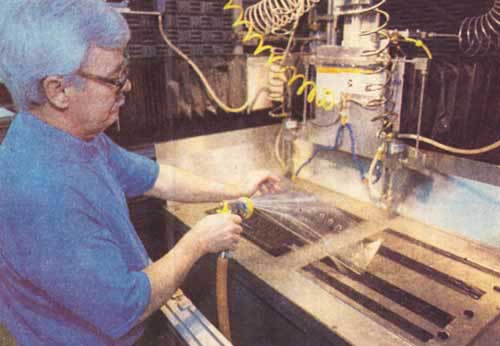
This picture is from the Binghamton Press February 24, 1992. It shows Dave Stanton and the new Ingersoll-Rand water cutting system. “The water-jet cutting machine cuts out 18 steps from the glass-cutting process, producing a component in mere minutes. Before McIntosh acquired the machine, the same process would take days to complete.”
I remember seeing the old process with several people, each having a drill press and water bath around the glass. Diamond cutters were used and it took a long time just to grind a hole in the glass, let alone, an elongated hole. The new water cutter puts out an extremely high pressure tiny stream of water that cuts right through the glass and leaves a perfectly smooth cut. The process is all computer operated. Rumor had it, the machine cost $250,000.
With the introduction of car systems, it became necessary to distinguish between home audio equipment and car audio. The MC430 was the first car amplifier to be produced.
The "wide" panel was introduced this year. All previous units had front panels that measured between 16" and 16-3/16" wide. The new front panels were 17-1/2". The Panloc mounting system was discontinued this year.
The large amplifiers, starting with the MI200 back in 1963, had 19" wide panels. This was the standard dimension for rack mounted equipment. The MC3500, MC2300, MC2500 and MC2600 all followed this example. When the MC1000 was introduced this year, the panel width was changed to 17-1/4". In 1994, the MC500 also had this dimension.
Sidney Corderman’s Retirement Party
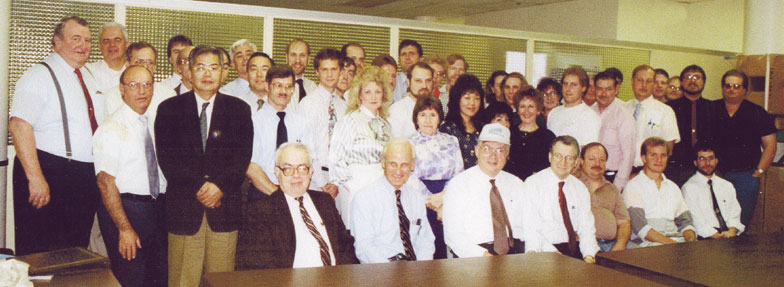
This was taken at Plant 6 and includes managers and most of the people in engineering. Sidney is front and center with the white hat. Larry Fish is at the left rear and I am next to him. Dave O’Brien is sitting at the left. Standing next to him is Mr. Shiojiri. Sitting next to Dave is Art Burton, our industrial design consultant. He worked with Tom Rogers for the new product designs. Tom is sitting on the other side of Sidney.
Although Sidney was officially retired, he remained active at McIntosh and later became temporary president. He also continued to design new tube equipment for McIntosh at his new home in Scottsdale, Arizona
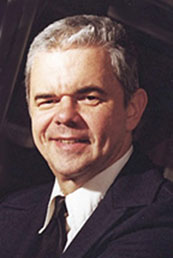 I left McIntosh in December this year. I had been
there for 25 years doing the work that I liked best. It had been my home that
fulfilled my passion and dedication for science, sanity and truth in audio. It
had been a dream-come-true. I had been very proud to initiate the line of
McIntosh loudspeaker systems, improving them over the years, always with an eye
to the best sound quality that could be made. I believed I had brought happiness
to many people, during this time, who love music and had purchased McIntosh
speaker systems. Carl and I spent many enjoyable years discovering the real
world of speakers and acoustics. My decision to leave was very upsetting and
difficult to make.
I left McIntosh in December this year. I had been
there for 25 years doing the work that I liked best. It had been my home that
fulfilled my passion and dedication for science, sanity and truth in audio. It
had been a dream-come-true. I had been very proud to initiate the line of
McIntosh loudspeaker systems, improving them over the years, always with an eye
to the best sound quality that could be made. I believed I had brought happiness
to many people, during this time, who love music and had purchased McIntosh
speaker systems. Carl and I spent many enjoyable years discovering the real
world of speakers and acoustics. My decision to leave was very upsetting and
difficult to make.
During my stay at McIntosh, and also while at Sonotone, I met and talked with many notable people in the audio industry. This included Ben Bauer, Rudy Bozak, Victor Brociner, Abe Cohen, Ray Dolby, Dr. Harvey Fletcher, Julian Hirsch, Larry Klein, Dr. Harry Olson, Ed Villchur, Paul Voigt, Dan Von Recklinghausen, Bert Whyte and of course, Gordon Gow and Frank McIntosh
1995
Ron Fone's presidency at McIntosh
ended in September of this year when Clarion declined to renew his 4-year
contract. No reason was specified.
Sidney Corderman Named President
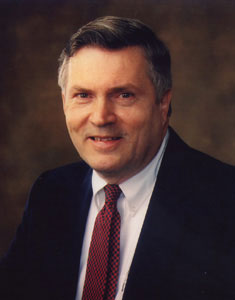 Sidney Corderman became temporary President. Sidney
graduated with a degree in physics from MIT in 1950. He joined McIntosh in 1951
after working for Radio Free Europe and the U.S. Government. Since then he had
been vice president in charge of engineering, research and development. He
contributed to the development of all the McIntosh products and holds many
patents relating to power amplifiers, protection circuits, equalizer systems,
tuner automatic frequency control and the McIntosh Power Guard circuit.
Sidney Corderman became temporary President. Sidney
graduated with a degree in physics from MIT in 1950. He joined McIntosh in 1951
after working for Radio Free Europe and the U.S. Government. Since then he had
been vice president in charge of engineering, research and development. He
contributed to the development of all the McIntosh products and holds many
patents relating to power amplifiers, protection circuits, equalizer systems,
tuner automatic frequency control and the McIntosh Power Guard circuit.
In December, Thomas Shaeffer became the new president.
1996
The MR7084 was introduced. This was a
lower profile and updated version of the MR7083. The MX130 and C39 were revised
with 6 channel inputs and provisions for the WK-3 and WK-4 keypads. The SL-1
powered subwoofer was produced. This had a 12" woofer and a built-in 250w
amplifier.
1997
In March, Thomas Sheaffer resigned
his position as President of McIntosh in Binghamton. David Black, from Clarion
in California, was the interim officer in charge of sales and operations. In
July, a new California based operation was created called McIntosh Sales
Incorporated with David Black as the new president. All sales activity, including
orders, was then based in California. McIntosh products were to be shipped to a
warehouse in New Jersey for distribution. Engineering and production remained
in Binghamton, NY. Kan Hayashi was appointed executive vice president of
McIntosh in Binghamton.
1998
In July, Matt Matsuda replaced
Hayashi as president of McIntosh Laboratory, Inc. The MA6450 and MA6850
integrated amplifiers was introduced this year. Warehousing and distribution of
all McIntosh products were relocated from New Jersey to Kentucky, which was the
main Clarion warehouse.
1999
In April, David Black became Vice
President of Clarion North America and was no longer directly connected with
McIntosh Laboratory, Inc. Matt Matsuda assumed total responsibility for
McIntosh in Binghamton. The MX132 A/V Control Center production started in
January. The MC2000 tube amplifier designed by Sidney Corderman went into
production in October and sold for $15,000. On August 15, Graham Hallett became
the new McIntosh Laboratory President.
2003
This year, Clarion sold McIntosh for an undisclosed amount to D&M Holdings based in Tokyo, Japan.
D&M also owned Marantz and Denon. Again, no change was expected for either
product quality or personnel. As of 2005, D&M also owned Snell, Boston
Acoustics, D&M Professional, ReplayTV, Rio and Escient. Charlie Randall,
previously a long-time engineer at McIntosh, remains President of McIntosh and
has provided a stable influence for the company.
Mr Shiojiri told me that it would take years for a company to get onto the original equipment installation in cars. He was right. McIntosh did not get a contract with Infiniti but later was awarded a contract with Subaru. Later, they also made the Riser Mount Radio for Harley Davidson motorcycles. Then they earned a $1.7 million contract to supply stereos for the 100th anniversary limited edition of the Ford GT. The car sold for $175,000.
2007
 Donald F. McIntosh, 73, of Scottsdale, AZ passed away
on April 18, 2007. He was the younger son of the late Frank H. McIntosh. Two
nephews, Bruce and David McIntosh and one sister-in-law, Lucy McIntosh
survives. Also, dear friends, Ed and Dee Dee Sandidge.
Donald F. McIntosh, 73, of Scottsdale, AZ passed away
on April 18, 2007. He was the younger son of the late Frank H. McIntosh. Two
nephews, Bruce and David McIntosh and one sister-in-law, Lucy McIntosh
survives. Also, dear friends, Ed and Dee Dee Sandidge.
Donald was a representative for McIntosh for several years in Washington D.C., Virginia, Delaware, Maryland and Eastern Pennsylvania.
I always liked Don and he was very pleasant to talk with. We had an enjoyable telephone conversation in 2006 rehashing old times.
2008
The best update for what was happening at McIntosh this year was presented in Time Magazine March 10, 2008 Global 1 and Global 2.
In 2008, I was surprised and glad to hear from Simeon Sandiford who is in Trinidad. I remember his visit to McIntosh in 1982 and had showed him the new acoustics lab. He became a McIntosh representative that year. Now, he has written an impressive account of his life experiences in audio titled “The Birth of an Audiophile: A Journey from Entry-Level to McIntosh”. Not only was he impressed with McIntosh and Gordon Gow but also with James Carroll. Jim was an experienced salesman at Harvey Radio before joining McIntosh and was very effective in generating McIntosh sales at the clinics run by Dave O’Brien.
Simeon was kind enough to sample me with some of the music that his company has produced. One CD is titled “Dance Again Mr. Bojangles.” This is an outstanding recording made with only two microphones. The coherence and transients are excellent. More information can be found at Sanch Electronix Limited.
I sent him a video made in 1980 with Jim Carroll as the host. It included a tour of Plant 7, Gordon Gow explaining the Unity Coupling principle and a tour of the new acoustics lab with Jim and me.
2009
At one time D&M Holdings was going to transfer Snell manufacturing to the McIntosh facility in Binghamton but it did not take place. Snell is now out of business. They had manufactured speakers at the Boston Acoustics main facilities in Peabody, MA.
2010
Maurice L. Painchaud passes away
 Maurice L. Painchaud, of Vestal,
passed away after a long illness on March 19, 2010 at the age of 88. He was
very devoted to his family and will be greatly missed. He is predeceased by his
parents, Edouard and Victoria Painchaud; sister, Jeanne and brother-in-law,
Roland Mutty; brother, Laureat and sister-in-law, Helen Painchaud; and sister,
Gisele Painchaud. He is also predeceased by a granddaughter, Rachael Painchaud.
He is survived by his loving and devoted wife of 68 years, Georgette Painchaud;
two sons and daughters-in-law, Richard and Patricia Painchaud of Vestal,
Normand and Janis Painchaud of Vestal; one granddaughter, Jeanine Painchaud and
her fiancé, Cody Root, both of Owego; one grandson, Paul Painchaud of Vestal;
and one great-grandson, Seth Root of Owego. He was dearly cherished by many
nieces and nephews. He graduated from Strayer College with a B.S. degree in
accounting. During WWII he worked for the United States Coast and Geodetic
Survey Department in Washington, DC. He started with McIntosh Engineering
Consulting Firm in 1944, which later evolved into McIntosh Laboratory of which
he was one of the founders. In 1989 he became President of McIntosh. After a
long and dedicated career with the company, he retired from McIntosh in 1992.
Maurice L. Painchaud, of Vestal,
passed away after a long illness on March 19, 2010 at the age of 88. He was
very devoted to his family and will be greatly missed. He is predeceased by his
parents, Edouard and Victoria Painchaud; sister, Jeanne and brother-in-law,
Roland Mutty; brother, Laureat and sister-in-law, Helen Painchaud; and sister,
Gisele Painchaud. He is also predeceased by a granddaughter, Rachael Painchaud.
He is survived by his loving and devoted wife of 68 years, Georgette Painchaud;
two sons and daughters-in-law, Richard and Patricia Painchaud of Vestal,
Normand and Janis Painchaud of Vestal; one granddaughter, Jeanine Painchaud and
her fiancé, Cody Root, both of Owego; one grandson, Paul Painchaud of Vestal;
and one great-grandson, Seth Root of Owego. He was dearly cherished by many
nieces and nephews. He graduated from Strayer College with a B.S. degree in
accounting. During WWII he worked for the United States Coast and Geodetic
Survey Department in Washington, DC. He started with McIntosh Engineering
Consulting Firm in 1944, which later evolved into McIntosh Laboratory of which
he was one of the founders. In 1989 he became President of McIntosh. After a
long and dedicated career with the company, he retired from McIntosh in 1992.
Published in the Binghamton Press & Sun Bulletin on March 24, 2010
2011

June 2, 2011
I knew Frank for many years before he went to work for Steve Rowell at Audio Classics. I remember first meeting him at his father’s home in the early 1970s when I was measuring the ML-4 speakers in their living room. I saw him many times over the years. Frank had that same deep voice and laughter that his father had. I was very sorry to hear that he had passed away so soon. He will be greatly missed.
Gow,
Frank J.
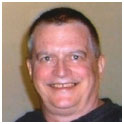 Johnson City:
Frank J. Gow, 65 of Johnson City, died Thursday June 2, 2011. He was
predeceased by his father, Gordon J. Gow; his mother, Pauline V. Gow; and a
brother, Peter Gow. He is survived by his children, John P. Gow, New Haven, CT,
Jennifer L. Gow and her fiancé Edward J. Terry III, Apalachin, David M. and
Elizabeth L. Gow, Richmond, VA; a sister, Louise Gow, Albany; a brother, John
and Tammy Gow, Chenango Forks; and survived and loved by many friends and
customers. Frank was a sales consultant for Audio Classics in Vestal. He was a
graduate of St. Patrick's Academy Class of 1962 and a U.S. Army Veteran of the Vietnam Conflict. He
enjoyed flying and was very knowledgeable about audio equipment.
Johnson City:
Frank J. Gow, 65 of Johnson City, died Thursday June 2, 2011. He was
predeceased by his father, Gordon J. Gow; his mother, Pauline V. Gow; and a
brother, Peter Gow. He is survived by his children, John P. Gow, New Haven, CT,
Jennifer L. Gow and her fiancé Edward J. Terry III, Apalachin, David M. and
Elizabeth L. Gow, Richmond, VA; a sister, Louise Gow, Albany; a brother, John
and Tammy Gow, Chenango Forks; and survived and loved by many friends and
customers. Frank was a sales consultant for Audio Classics in Vestal. He was a
graduate of St. Patrick's Academy Class of 1962 and a U.S. Army Veteran of the Vietnam Conflict. He
enjoyed flying and was very knowledgeable about audio equipment.
Published in Binghamton Press & Sun-Bulletin from June 4 to June 6,
2011
2013
Albert Hyle Passes Away (1935-2013)
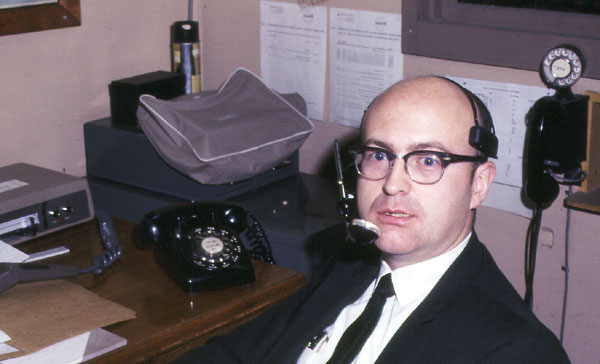
Johnson City, NY: Albert Hyle passed away on March 24, 2013 after battling many years with congestive heart failure. He is survived by his devoted wife, Emily, his daughter, Cynthia Bezek and his grandson, Ian Bezek. He was service manager for McIntosh Labs for 15 years. He later owned and operated Hyle's Audio for 18 years. Most recently, he enjoyed working with his wife in her perennial flower business. He enjoyed playing the saxophone and leading choir in church.
Dirk Roos Passes Away (1923-2013)
 Binghamton,
NY: Dirk J. Roos passed away on March 28, 2013 after a brief illness. He was
originally an independent McIntosh retail dealer in Detroit, MI and joined
McIntosh in 1957. He retired in 1992.
Binghamton,
NY: Dirk J. Roos passed away on March 28, 2013 after a brief illness. He was
originally an independent McIntosh retail dealer in Detroit, MI and joined
McIntosh in 1957. He retired in 1992.
He is best known for pioneering in marketing, advertising and mentoring audio dealers. He was also involved with establishing dealer representatives for McIntosh. Dirk established direct mail advertising and a mailing list maintenance program for authorized McIntosh dealers. His interests included woodworking, travel, gardening and nature but his true passion was for music and books.
![]()
This
is the end of my history about McIntosh Laboratory, Inc. at this time.
I hope to add more information if and when it becomes available.
For recent literature about McIntosh products, you might check the McIntosh
page.
|
About This Site |
||
|
|
Any comments, corrections, or additions are welcome. |
|
|
|
Created
by Roger Russell |
|
